|
|
|
|
|
|
|
 |
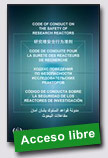 |
Código
de Conducta sobre la Seguridad de los Reactores de
Investigación
IAEA,
Multilingual Full Text, 2006, 120 p.
El
objetivo del presente Código es lograr y mantener un
alto grado de seguridad de los reactores de investigación
en todo el mundo mediante la mejora de las medidas
nacionales y la cooperación internacional, incluida,
cuando proceda, la cooperación técnica relacionada con
la seguridad. Este objetivo se alcanzará mediante unas
condiciones de explotación apropiadas,
la
prevención de
|
|
accidentes y, en caso de que se
produzcan, la mitigación de sus
consecuencias radiológicas con el fin de
proteger a los trabajadores, los miembros del público y
el medio ambiente contra los peligros de la radiación.
extraído
de:
http://www-pub.iaea.org/MTCD/publications/PubDetails.asp?pubId=7380
|
 |
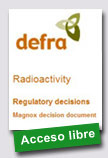 |
Magnox
decision document
Department
for Environment Food, and Rural Affairs, UK, August
2006, 123 p.
This document sets out the decisions of the
Secretary of State For Environment, Food and Rural
Affairs, the Secretary of State For Health, (“the
Ministers”) and the National Assembly For Wales,
(NAW), under the Radioactive Substances Act 1993 and the
Ministers under the Justification of Practices Involving
Ionising Radiation Regulations 2004, (the 2004
Regulations), concerning the
|
|
applications of British Nuclear Fuels plc,
(BNFL), to dispose of or accumulate radioactive wastes
on or from Magnox sites and the Environment Agency’s
decisions and recommendations with regard to the
applications.
The
decision concerns the applications of British Nuclear
Fuels plc to dispose of radioactive waste from the
following Magnox Nuclear Power Stations; Berkeley,
Bradwell, Dungeness A, Hinkley Point A, Oldbury,
Sizewell A, Trawsfynydd and Wylfa.
extraído
de:
http://www.defra.gov.uk/environment/radioactivity/government/decisions/index.htm
|
 |
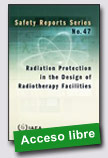 |
Radiation
Protection in the Design of Radiotherapy Facilities
IAEA,
2006, 129 p.
This
Safety Report provides practical guidance regarding the
design and shielding of radiotherapy facilities. Methods
for determining the necessary structural shielding for
external beam units (60Co units, linear accelerators,
superficial and orthovoltage units, and simulators), as
well as brachytherapy units, are described. Data used
for
|
|
determining
the structural shielding necessary for all types of
radiotherapy facilities are reproduced and example
calculations are provided for each type of facility. In
addition, specific design features that could be
incorporated into radiotherapy facilities, including
those related to the security of radioactive sources,
are discussed. This report is intended to be used
primarily by radiological physicists in the planning and
design of new radiotherapy facilities and in the
remodelling of existing facilities. Sections of the
report will also be of interest to architects, civil
engineers, hospital administrators and others who are
concerned with the design of radiotherapy facilities. In
addition, the guidance in the report will be useful to
regulatory personnel responsible for the licensing and
inspection of these facilities.
extraído de:
http://www-pub.iaea.org/MTCD/publications/PubDetails.asp?pubId=7197 |
 |
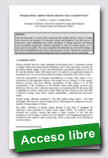 |
European
Citizens’ Opinions towards Radioactive Waste: an
Updated Review
European
Commission, Directorate General for Energy and
Transport, Unit Nuclear Energy and Radioactive Waste,
Jun 2006, 15 p.
The Eurobarometer is a major policy instrument that
enables citizens’ views to be taken into account in
the framing of Community policies and initiatives. The
2005 survey on radioactive waste highlighted the central
importance of taking decisions and |
|
finding
more acceptable management solutions, especially in
order for nuclear energy to be a real option for the
public. The survey underlined the relatively low level
of knowledge on this issue and highlighted major gaps in
the perception of risk. Citizens also wanted to be
involved in decisions and acknowledged the role to be
played by the EU in this field.
extraído
de:
http://ec.europa.eu/energy/nuclear/waste/doc/2006_06_nucelar_waste_update_review_en.pdf
|
 |
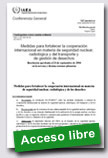 |
Medidas
para fortalecer la cooperación internacional en materia
de seguridad nuclear, radiológica y del transporte y de
gestión de desechos
IAEA,
Informe del Director General, 15 de
agosto de 2006, 44 p.
De
conformidad con las resoluciones GC(48)/RES/10.D y
GC(49)/RES/9, se presenta, para su examen por la Junta
de Gobernadores y la Conferencia General, un informe
sobre los siguientes temas: Exámenes reglamentarios,
sistemas
|
|
reglamentarios
eficaces y redes de seguridad;
Programa de normas de seguridad del Organismo; Seguridad
de las instalaciones nucleares; Seguridad radiológica;
Seguridad en la gestión de desechos radiactivos;
Clausura en condiciones de seguridad de instalaciones
nucleares y de otro tipo que utilizan materiales
radiactivos; Enseñanza
y capacitación en seguridad nuclear, radiológica, del
transporte y de los
desechos; Seguridad tecnológica y física de las
fuentes radiactivas;
Seguridad del transporte; Preparación y
respuesta
extraído
de:
http://www.iaea.org/About/Policy/GC/GC48/Resolutions/Spanish/gc48res10_sp.pdf
|
 |
|
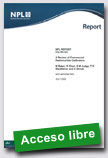
|
A
Review of Commercial Radionuclide Calibrators
The UK's National Measurement Laboratory,
July 2005, 33 p.
Radionuclide
Calibrators are used in nuclear medicine departments to
assay the radioactive content of radiopharmaceuticals
prior to administration to the patient. The aim of the
measurement is to ensure that the patient receives the
lowest practicable radiation dose compatible with
obtaining a good quality image for diagnostic purposes
or with delivering the required dose to the tumour in
therapeutic use. It is a
condition of the license to use
|
|
radiopharmaceuticals
(ARSAC certificate) that are activity administered is
within 10% of the prescribed activity. This implies that
the Radionuclide Calibrators should have an accuracy
better than this - perhaps around 5%. This report
summarises the results from tests of commercial
Radionuclide Calibrators to verify the accuracy of such
measurements if the instrument is used 'as is' from the
manufacturer. Nine commercial Radionuclide Calibrators
were obtained from the manufacturers for testing. Each
chamber was tested using samples of typical
radionuclides used in nuclear medicine (18F, 00Cr, 67Ga,
99mTc, 111In, 123I, 125I, 131I, 201TI). Each nuclide was
dispensed into common formats (2ml BS ampoule, 10R
Schott vial, 2 ml BD syringe, 5 ml BD syringe and P6
vial). The results show that some instruments do meet
the 5% specification on accuracy for a range of
radionuclides and sample formats. However, some
instruments give readings that are significantly in
error (up to 90% wrong), others show systematic
discrepancies for all the radionuclides tested. The
conclusion is that experimental verification of the
accuracy of commercial Radionuclide Calibrators is
essential when used in the clinical setting.
extraído de:
http://www.npl.co.uk/ionrad/publications/#reports2006
|
 |
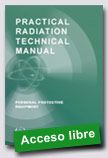 |
Personal
Protective Equipment
IAEA,
18 May 2004, 71 p.
Occupationally exposed workers need to have
a basic awareness and understanding of the risks posed
by exposure to radiation and the measures for managing
these risks. To assist persons who have a responsibility
to provide the necessary education and training of these
workers, the series of Practical Radiation Technical
Manuals (PRTMs) was created. Personal protective
equipment is used
|
|
when
it is not reasonably practicable to provide complete
protection by other means. Adequate personal protection
depends on the protective equipment being correctly
selected, fitted and maintained. Appropriate training
for the users and arrangements to monitor usage are also
necessary to ensure the intended degree of protection.
This manual explains the principal types of personal
protective equipment, including protective clothing and
respiratory protective equipment, and describes how to
use this equipment within a safe system of work.
extraído de:
http://www-pub.iaea.org/MTCD/publications/PDF/PRTM-5_web.pdf
|
 |
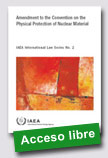 |
Amendment
to the Convention on the Physical Protection of Nuclear
Material
IAEA International Law Series No.
2, 2006, 158 p.
This
publication brings together in a more convenient format
the official records and other relevant documents
relating to the negotiations on the Amendment to the
Convention on the Physical Protection of Nuclear
Material. The Amendment makes it legally binding for
States Parties to protect nuclear
facilities and material in
peaceful
|
|
domestic use,
storage and transport. It also provides for expanded
cooperation between and among States regarding rapid
measures to locate and recover stolen or smuggled
nuclear material, mitigate any radiological consequences
of sabotage, and prevent and combat related offences.
The Amendment constitutes an important milestone in the
global efforts to combat nuclear terrorism.
extraído de:
http://www-pub.iaea.org/MTCD/publications/PDF/Pub1275_web.pdf
|
 |
|
|
|
|
|
|
|
|
|
|
|
|
|
|
|
|
|
|
|
|
|
|
|
|
|
|
|
|
|
|
|
|
|
|
